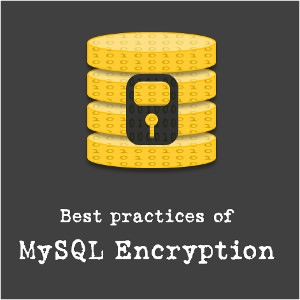Database Design and MySQL

Udemy
Course Summary
Database Design, MySQL Fundamentals and more advanced programming concepts. Learn how to program banks, libraries, etc.
-
+
Course Description
This course is offered to allow for download and anytime use as well as for anybody who wishes to support my YouTube channel. About this course: This is an introductory course that dives into the basics of many topics in databasing, including: Database Design Datatypes Inserting and manipulating data Joins Character sets and collations Storage engines functions and much more. This master course has 3 sub-courses with a total of over 100 videos teaching the absolute basics, intermediate topics, and the start of many advanced databasing concepts that will have you programming databases in no time.
-
+
Course Syllabus
- Database Design and Normalization
- What is a Database?
- Introduction
- Basic Terms
- Advanced Terms
- Primary Key
- Foreign Key
- Relationships
- 1 to 1 Relationships
- 1 to Many Relationships
- Many to Many relationships
- Why Many to Many relationships can be bad
- Designing relationships
- 1nf (First Normal Form)
- 2nf (Second Normal Form)
- 3nf (Third Normal Form)
- Starting the Design and Normalization
- MySQL Workbench
- Building Our Database and 1nf
- Designing a Library for Books
- Building a Library for Books Pt1 - Following the Forms
- Building a Library for Books Pt2
- Building a Library for Books pt3 and 2nf pt2
- Building a Library for Books pt4 and 2nf/3nf
- Building a Library for Books Pt5 - Finishing the Database
- Concluding Lecture: Where to go from Here. Final Video!
- MySQL Datatypes
- Char and Varchar
- Text Types
- Enum and Set
- Binary, Varbinary, and Blobs
- Integers
- Decimals, Floats, and Doubles
- Bit, Boolean, and Serial
- Date, Datetime, Time, and Year
- Timestamp (Last Video)!
- Complete MySQL Series
- What is MySQL?
- How Data is Organized and Normalization
- Relationships
- Keys
- String Datatypes
- Numeric Datatypes
- Date and Time Datatypes
- Column Features and Extra Settings
- Indexes
- Quotes and Escaping Special Characters
- How to Build a Database
- Altering Data and More Advanced Queries
- Joins (MySQL in English)
- How to install XAMPP and start Using PhpMyAdmin
- How to Define Your Database Structure
- Programming Our Database
- Comments, Semi Colons, Deleting or Dropping Tables
- How to add Columns and Drop(Delete) Columns
- How to Insert and Update Data in a Table Using SQL
- How to use the Insert and Select Commands
- How to do Show Commands
- How to do Alter Commands
- How to be Consistent with MySQL
- How to use a Where Clause and Select Statement
- How to use an Order by Clause
- How to use a Limit Clause
- How to Properly Update Columns
- How to Delete Data
- Introduction to Character Sets and Collations
- How to search your Database using Like and Wildcards
- Introduction to MySQL Storage Engines
- How to Set and Alter Your Storage Engine
- Comparison Operators
- Foreign Key Constraints for the InnoDB Storage Engine
- Introduction to Joins
- Inner Joins
- Left Joins
- How to do an Inner Join and Useful Tips
- How to do Left Joins (outer joins) and Unions
- What is a Function? Introduction to Functions
- Aliases
- How to use Aliases with Joins and Functions
- String Functions PART 1!
- String Functions PART 2!
- How to Use Math Operators
- Numeric Functions PART 1!
- Numeric Functions PART 2
- Date and Time Functions
- Formatting the Date
- What is Encryption?
- How to Encrypt Databases with 1-Way Encryption
- How to Encrypt Data with 2-Way Encryption
- Normalizing a Bank System
- Datatypes of a Bank System
- Indexes and Foreign Key Constraints for our Bank System
- Programming Our Bank System with phpMyAdmin
- Aggregate Grouping Functions and how they work!
- Keyword Distinct
- Group By
- How to use Aggregate Functions
- Comparison Functions
- if Function
- Case Operator
- Full Text Search Index
- In Boolean Mode
- Concluding Lecture: Final Video! How to Organize In Boolean Mode!





